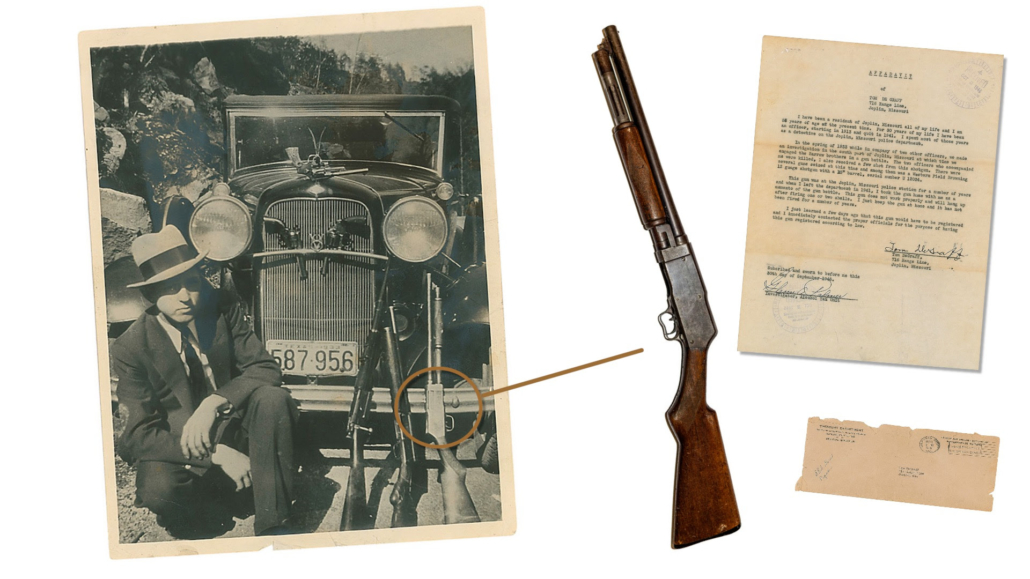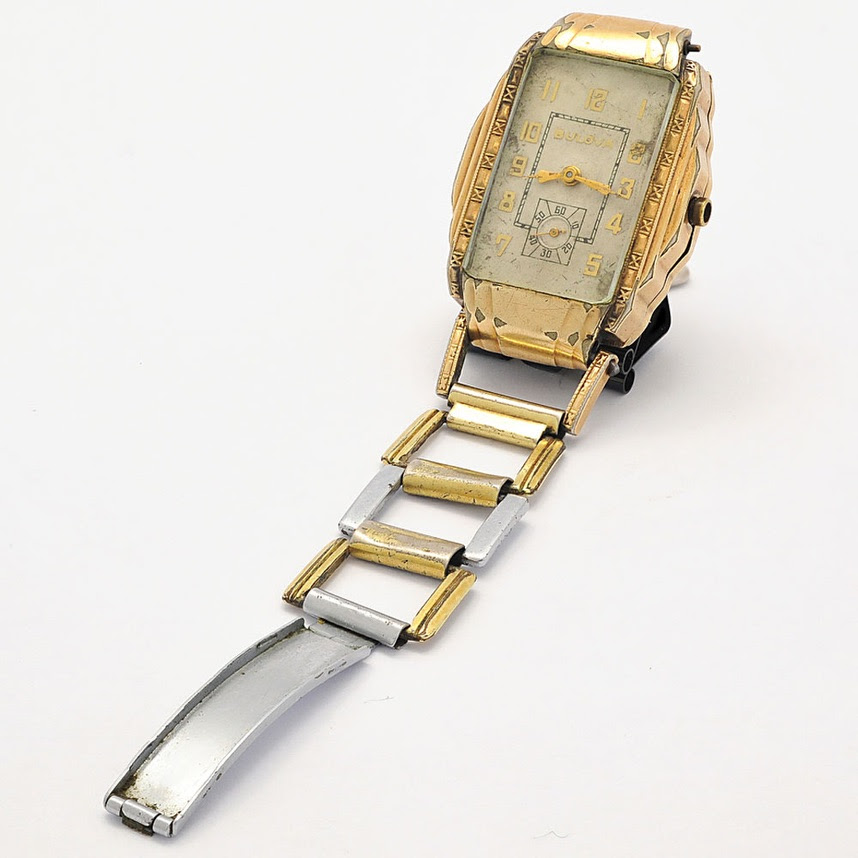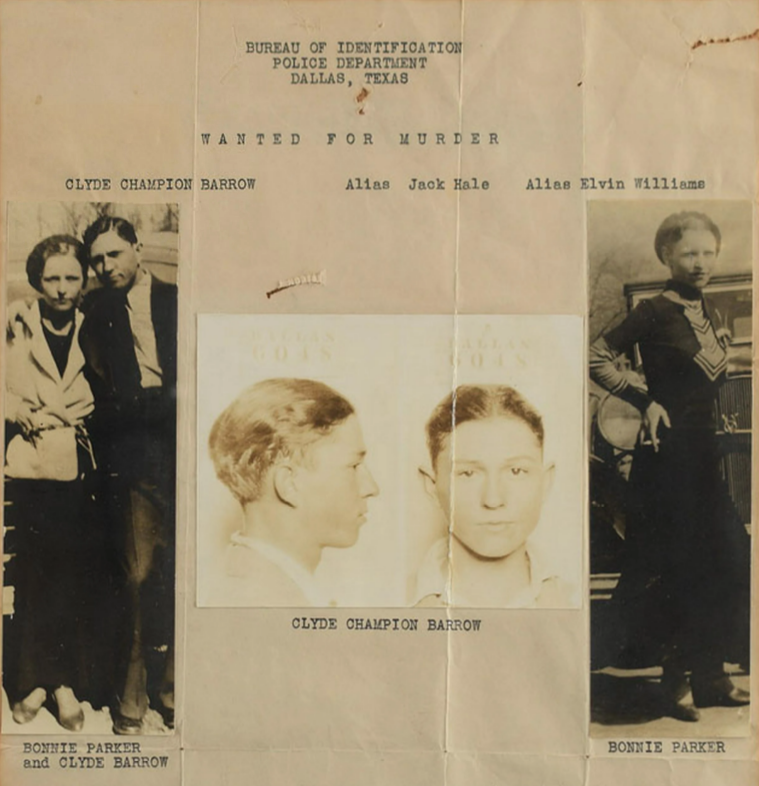
BOSTON – Gangsters, gun molls, rats, and mobsters have long captured the American imagination—transformed into symbols of individualism and stars of the silver screen, these figures have become icons in their own right. In Session One of the Remarkable Rarities live auction event, RR Auction is proud to present a wealth of memorabilia associated with these criminal crooks from folk heroes like Bonnie Parker, Clyde Barrow, and John Dillinger to mob bosses like Al Capone in a live auction that will take place on September 21, 2019. Preview the full auction catalog on LiveAuctioneers.
Highlights include Bonnie Parker’s handwritten poem book titled “Poetry from Life’s Other Side.” Thirty-two handwritten pages inside of a black leatherette bank book, stamped on the front cover, “The First National Bank, Burkburnett, Texas.” Featuring a mix of Parker’s original creative compositions and renditions of popular folk ballads, these poems were written by Parker while she was held in Kaufman County Jail, Texas, in 1932, after being arrested for the botched armed robbery of a hardware store with Clyde Barrow, Ralph Fults, and Raymond Hamilton; while Barrow and Hamilton managed to escape on foot, Parker and Fults were apprehended. This was Parker’s first and only arrest, and she stewed in jail for about two months before being released on June 17, after the jury failed to indict her.
In Emma Parker’s 1934 biography of Bonnie and Clyde, she made note of several particulars of her daughter’s stay in prison: that this was when she first drafted ‘Suicide Sal’; that it was when Bonnie began to use hard slang and gangster jargon; and that she befriended the jailer and his wife, who would let her sit out on the lawn. With little to do other than pine for Clyde and chat with her jailer, it is no surprise that Bonnie’s fertile imagination turned to poetry: of the ten poems in this book, five appear to be original compositions, largely drawn from her adventurous life on the road with the Barrow Gang.

Bonnie Parker’s handwritten poem book “Poetry from Life’s Other Side,” penned on 32 pages inside a black leatherette bank book
De Graff was a detective with the Joplin, Missouri Police Department when, on April 13, 1933, he, along with Newton County Constable Wes Harryman, Joplin PD Detective Harry McGinnis, and Missouri Highway Patrolmen W.E. Grammer and George Kahler, attempted to execute a search warrant at an apartment rented by a group of men and women in south Joplin. The warrant had been issued after receipt of a tip that a car matching the description of one used during a burglary at the Neosho Milling Company had been seen in the garage beneath the apartment. Upon their arrival, Harryman exited the vehicle he shared with McGinnis and De Graff, and approached an unidentified man who began closing the garage door upon spotting them. Almost immediately, Harryman was mortally wounded by a shotgun blast, and McGinnis, who was following, was killed by a second shotgun round. The two Highway Patrolmen joined De Graff, who had taken a few pellets during the opening volley, and worked their way around to the side of the building exchanging fire as they did so (W.D. Jones was hit in the side, Buck Barrow was grazed by a bullet, and Clyde Barrow was saved when his coat button deflected a bullet). Eventually, the occupants smashed their way through the garage door in their car and sped away amidst a hail of gunfire from the surviving law enforcement officers.
De Graff expands on this in his affidavit: “In the spring of 1933 while in the company of two other officers, we made an investigation in the south part of Joplin, Missouri at which time we engaged the Barrow brothers in a gun battle. The two officers who accompanied me were killed, I also received a few shots from this shotgun. There were several guns seized at this time and among them was a Western Field Browning 12 gauge shotgun with 15″ barrel, serial number U 12034.”
According to the affidavit, the shotgun remained at the Joplin Police Department until De Graff left the department in 1941 when he took the gun with him “as a memento of the gun battle.” It is interesting to note that the famous photographs of Clyde Barrow and W.D. Jones in front of their automobile with their assembled arsenal (found at the site of the Joplin shootout) distinctly shows a sawed-off, slide-action Savage-Stevens Model 520 type shotgun propped up against the bumper on the far right. The Western Field Browning Model 30 was a store branded version of the Model 520 made for Montgomery Ward, and there is little doubt that this is the very gun photographed with the Barrow brothers.
“Besides the timeless love story of Bonnie and Clyde, the Barrow gang was known for their massive fire power which could out gun any local sheriff who happened upon them,” said Bobby Livingston, Executive VP at RR Auction. “This particular Browning shotgun was recovered by a law officer who survived a shootout with Clyde Barrow.”

The gold-filled gentleman’s Bulova wristwatch recovered from Clyde’s body by his father after his death, featuring a rectangular white face with golden Arabic numerals, a mechanical 21-jewel movement with sub-second hand, and partial linked bracelet. The watch is nearly identical to the Lone Eagle model and was manufactured in 1931.
The watch was purchased from Clyde’s sister, Marie Barrow Scoma, by noted collector David Gainsborough Roberts, and is accompanied by several pieces of their correspondence, including: a letter signed by Marie Barrow Scoma, providing some background information: “The watch that my brother Clyde was wearing when he was killed in Louisiana was taken from the mortuary by my father along with Clyde’s clothing when he went to claim Clyde’s body”; a handwritten letter by Marie Barrow Scoma with attached typed listing of items for sale, including “Wristwatch: belonged to Clyde Barrow and was worn by him when ambushed on May 23, 1934”; and another letter from Marie, noting: “Clyde’s Bulova watch with a bullet crease on it, after his death my mother gave the watch to my other brother who wore it until his death, then his wife returned it to me.”
Upon hearing of the death of his son, Henry Barrow went to Arcadia, Louisiana, to accompany Clyde’s body back to Dallas. This Bulova wristwatch was among Clyde’s personal effects returned to Henry Barrow at that time, which also included his bloody coat, light blue shirt, dark blue pants, and a 1925 Elgin pocket watch. Many of these items were repurposed or used by the family: one of the Barrow brothers wore this wristwatch, Clyde’s father Henry carried the pocket watch, and the pants were re-tailored to fit a child while ‘making due’ during the Great Depression. As the watch worn by Barrow at the time of his grisly death, this is an extraordinary piece of Americana from one of the most infamous and popular outlaws in history.
Among other Gangster memorabilia is an extraordinary Al Capone twice-signed mortgage document, a sterling silver cigarette case presented to Capone on his wedding anniversary by fellow mobster Johnny Torrio, along with an incredible assortment of John Dillinger material; that includes a wooden gun, attributed to his infamous 1934 jailbreak and three wanted posters.


